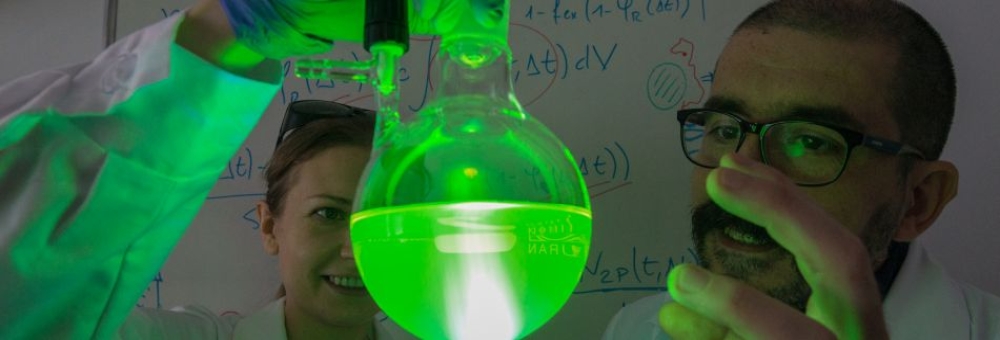Publication
Electron transfer in silicon-bridged adjacent chromophores: the source for blue-green emission ,
Author(s): Bayda, Malgorzata and Angulo, Gonzalo and Hug, Gordon L. and Ludwiczak, Monika and Karolczak, Jerzy and Koput, Jacek and Dobkowski, Jacek and Marciniak, Bronislaw ,
Title: Electron transfer in silicon-bridged adjacent chromophores: the source for blue-green emission ,
Abstract: Si-Bridged chromophores have been proposed as sources for blue-green emission in several technological applications. The origin of this dual emission is to be found in an internal charge transfer reaction. The current work is an attempt to describe the details of these processes in these kinds of substances, and to design a molecular architecture to improve their performance. Nuclear motions essential for intramolecular charge transfer (ICT) can involve processes from twisted internal moieties to dielectric relaxation of the solvent. To address these issues, we studied ICT between adjacent chromophores in a molecular compound containing N-isopropylcarbazole (CBL) and 1,4-divinylbenzene (DVB) linked by a dimethylsilylene bridge. In nonpolar solvents emission arises from the local excited state (LE) of carbazole whereas in solvents of higher polarity dual emission was detected (LE + ICT). The CT character of the additional emission band was concluded from the linear dependence of the fluorescence maxima on solvent polarity. Electron transfer from CBL to DVB resulted in a large excited-state dipole moment (37.3 D) as determined from a solvatochromic plot and DFT calculations. Steady-state and picosecond time-resolved fluorescence experiments in butyronitrile (293-173 K) showed that the ICT excited state arises from the LE state of carbazole. These results were analyzed and found to be in accordance with an adiabatic version of Marcus theory including solvent relaxation.
Pages: 11404-11415 ,
Journal: Phys. Chem. Chem. Phys. ,
Publisher: The Royal Society of Chemistry ,
Volume: 19 ,
Year: 2017
URL: http://dx.doi.org/10.1039/C7CP00590C ,
DOI: 10.1039/C7CP00590C ,



